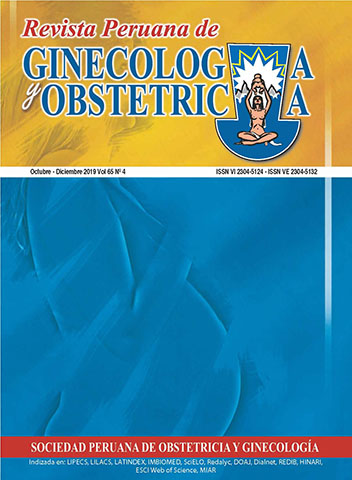Pathophysiology of anemia in pregnancy: anemia or hemodilution?
DOI:
https://doi.org/10.31403/rpgo.v65i2210Abstract
Iron is essential for health; its deficiency and excess are harmful. Our bodies have a high capacity to store and reuse iron so that its requirement is small (1-2 mg absorbed/day). Hepcidin, a hormone produced in the liver, has an important role in this element’s homeostasis by blocking its transport protein, inhibiting its absorption in the duodenum and its release from the iron stores. During pregnancy, there is a new iron requirement for the placenta and fetus. This causes an increase in erythropoiesis; however, hemoglobin concentration decreases due to the greater vascular expansion. This results in hemodilution, which is evident starting the second trimester and returns to pre-gestational values at the end of the third trimester. Maternal iron deficiency anemia becomes a public health problem when it is moderate (7-14,5 g/dL) during pregnancy adversely affect the mother and neonate. For this reason, it is important to confirm if a pregnant woman with low hemoglobin levels is anemic or if it is due to hemodilution, a physiological process during pregnancy that does not require treatment. This review presents evidence to distinguish anemia from physiological hemodilution.Downloads
Download data is not yet available.
Downloads
Published
2019-10-02
How to Cite
Gonzales, G. F., & Olavegoya, P. (2019). Pathophysiology of anemia in pregnancy: anemia or hemodilution?. The Peruvian Journal of Gynecology and Obstetrics, 65(4), 489–502. https://doi.org/10.31403/rpgo.v65i2210
Issue
Section
Simposio - Anemia en la gestación
















